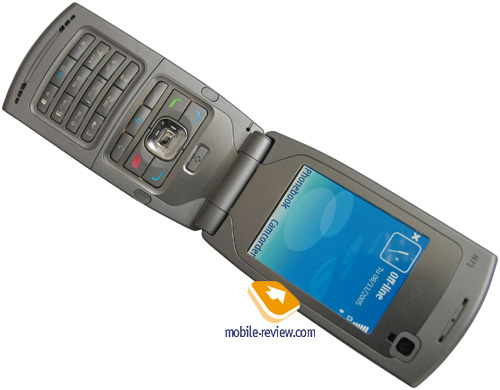
The company of Nokia was the first to introduce a clamshell Symbian smartphone. As a result Nokia 6260 greatly distinguished from the majority in its firm-factor due to irrationally big size and weight, which even crossed the very presence of Symbian and flexible capabilities of the operating system. Also you couldn't use the clamshell in a customary manner as it lacked external screen. And as a result the phone was not as popular in a technically advanced medium, as it was among glamour girls (at the beginning of sales), and after that among students and mid-level managers (after the start price reduced). That was not mass spread which added charm, no, the phone as either loved, or not. And then the Symbian line of clamshells represents developing two different product lines. On the one hand, they are fashion solutions with this or that functionality introduced for the first time, also they are endowed with unusual design and bring innovations. Nokia N90 is a good example, this phone grew of targeting at fashion audience, which likes showing off with their phones, and technically it also attracted with functional component. On the other hand, Nokia plans to keep on and release phones with classical design and typical functionality (a few innovations, which are actually unnecessary here). These clamshells can be considered some kind of replicas of usual candy bars of corresponding classes. And here I'd note that a replica doesn't mean direct move of the platform in another body, that is more positioning of the phone and some changes that happened since the release of a corresponding candy bar model. Changes may mean the renewal of the operating system, integration of other screens, some insignificant variations in selected peripheral devices, preset programs.
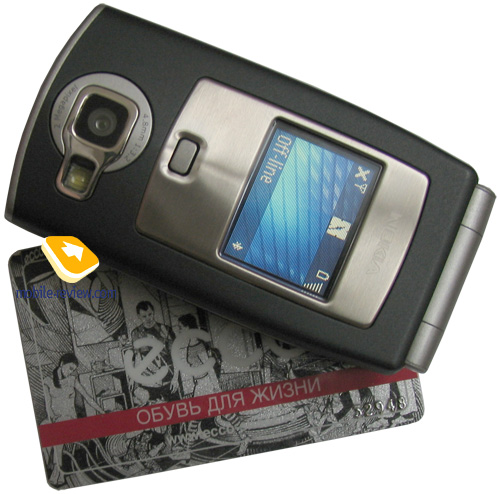
The appearance of such clamshells is practically well-taken, as it widens the products line and provides choice to users, who love this form-factor. When speaking about Nokia N71, we can surely call the Nokia N70 its prototype. And a clamshell is a slightly improved version of this phone (and again, you should overlook technical details, consider the question from positioning point of view).
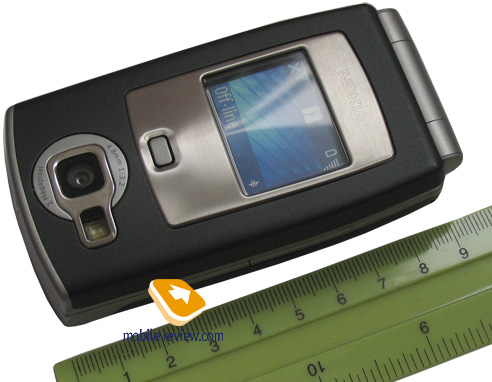
The size of Nokia N71 is 98.6x51.2x23 mm, which is a typical size of a Symbian device, but not the size of an average clamshell. Considering its work in UMTS, we can say the size is quite well-taken. For you to compare, the feelings of this phone and Sony Ericsson W900i in hands and clothes pockets are quite similar.
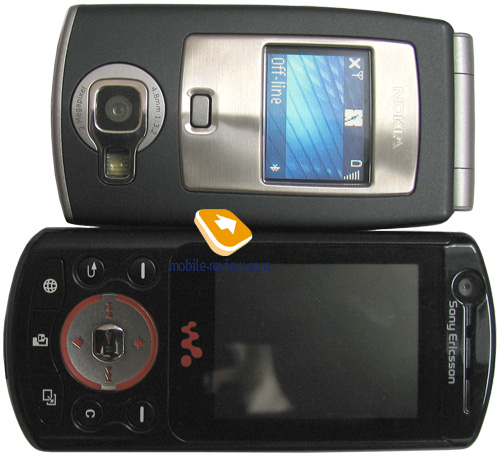
Considering the size, we can only say that women the target group and probably will form about 5-10 percents of customers. They estimate the appearance quite interestingly - "so light, but at that such bulky!" To be faithful, women in focus groups called Motorola V3x bulky as well (they probably, considered the width of the phone).
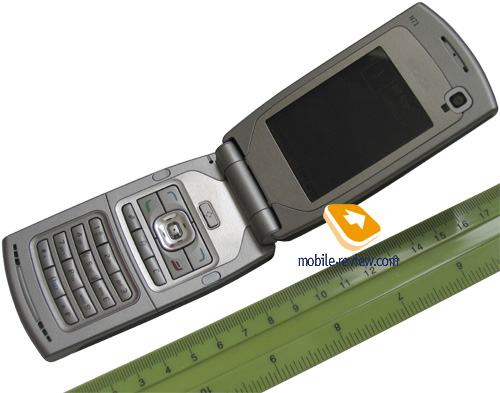
Nokia N71 weighs 139 grams, which is not little for a phone; however a visual impression tells it should be even heavier. Its brown body, few details panted in silvery, which make an impression of massiveness, is perhaps the reason. And it is even stronger due to a metallic insertion around the external screen and a projecting silvery hinge on the top.
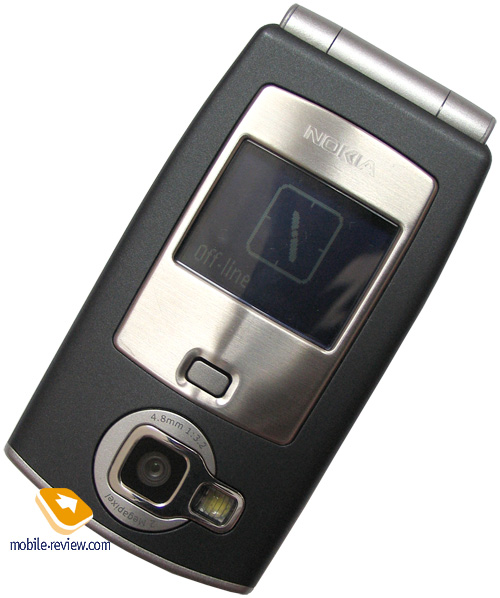
A camera module and a light diode flash are on the face panel. The camera is CMOS 2MP, which is very close to the one integrated into the N70, no autofocus. No external buttons are provided, so you can activate the camera only from the menu.
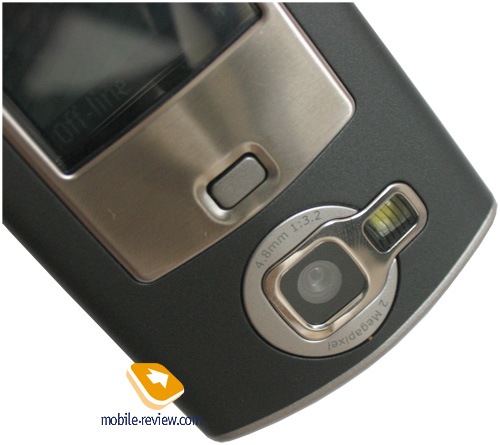
In fact, there are only three external buttons - the top on/off button (it is also responsible for changing profiles), one button under the screen, which allows viewing system messages, call log without opening the phone and finally a left-sided Push To Talk button (volume control by side buttons is not foreseen).
A faded external screen is STN 65K, it is quite large, and however the picture looks very carelessly due to enlarged grain size. Still you can read texts in the sun due to big font-size.
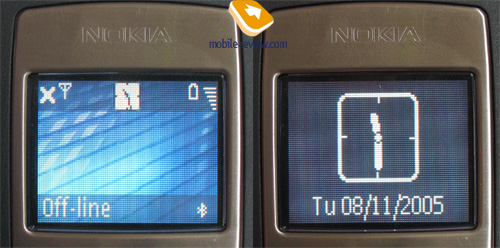
We cannot call the screen good, which is quite a middling solution (on the other hand, only several manufacturers integrate qualitative external screens). The resolution is 96x68 pixels (diagonal forms 1.36").
A standard interface Pop Port connector is on the top, not the bottom end. An Audio Adapter is included into the kit, which is an adapter with a standard slot for 3.5 mm, which allows using any type of headsets you like. And previously, all serious complaints concerned incompatibility to use usual earphones instead of the company's ones.
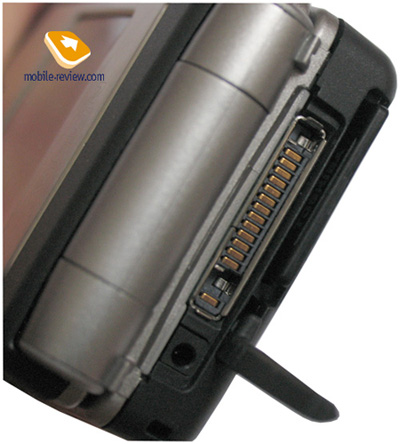
A small folding latch is near the interface connector, and a miniSD memory slot hides under it (the phone size allows using this card type but not microSD). And a 128 MB card is included into the kit; it contains trial versions of some programs. The company of Nokia may release the N71 equipped with less capacious cards for some markets.
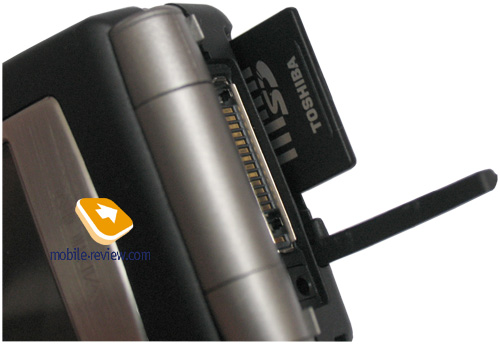
You can open the phone with one hand, however not everybody will like the task (it all depends on the palm size). The fold spring is not very tough, however not loosened, which adds some solidity to the opening process.

Your feeling of this device both tactile and during use ones rouse parallels with cars (actually I dislike such comparison, but here it is well-taken). The phone is massive and solid, which will attract people who adore Mercedes-Benz (driving these cars resembles using Nokia N71).
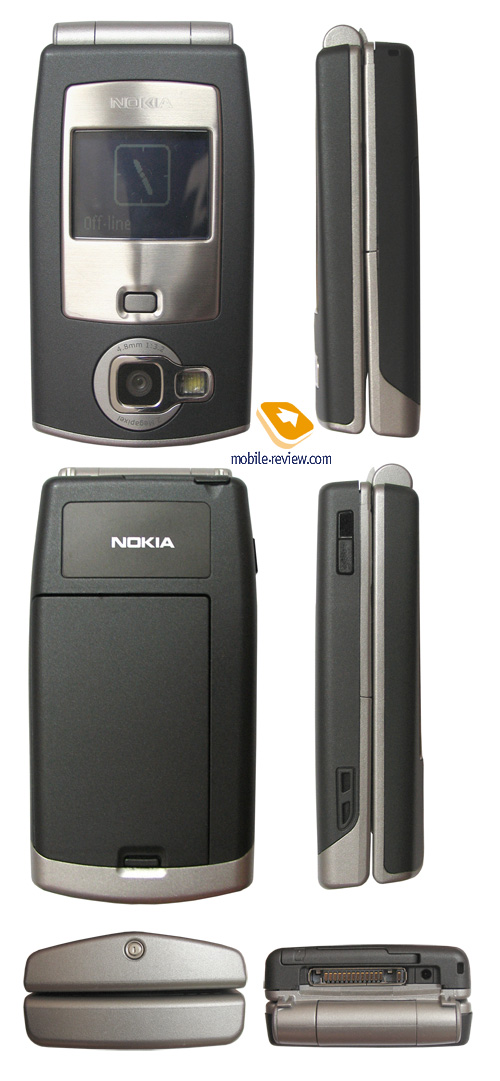
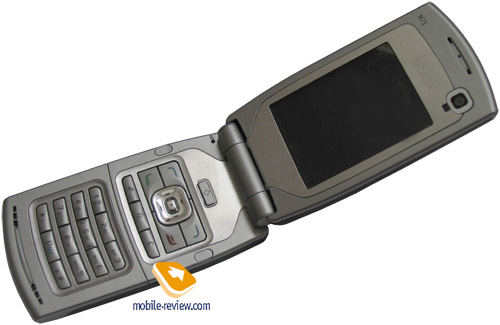
The internal screen is rounded with a metallic insertion as well, and functional keys are designed the same way on the bottom side. A VGA camera is placed under the screen, it serves for video conferencing, however you can takes photos with it (though they will mainly be useful for contacts). A light indicator, which activates backlighting in the dark, is under the camera.
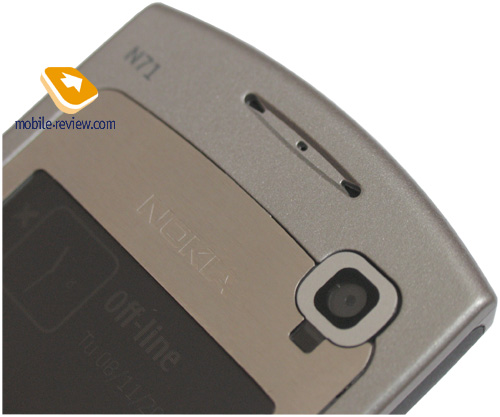
A QVGA screen means 240x320 pixels resolution (2.4"). The matrix is TFT and shows up to 262 K colours. You can't estimate the screen capabilities only due to an interface (as blue prevails and icons are monotonous). The images are more colourful than in Sony Ericsson W900i, however still are on the average level (you can see comparison of this screen with other QVGA models in the review of this model).
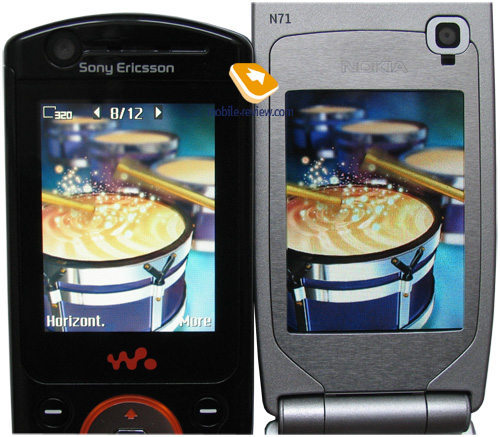
The maker could have integrated a screen with higher resolution on Nokia N71, but refused from this idea in order not to lead the device on the higher level both in price and functionality. In general it is not bad, and will rouse no complaints among usual users. The picture is readable in the sun and seen in various angles. The display is capable of showing up to 9 text lines and a couple of service lines (it depends on the application, however the total number of lines will not exceed 12).
Silicone insertions are placed on the bottom end of the body (rectangles in two sides), they prevent the screen from touching the keypad. A Multimedia Key is centered above the main key block; this button calls an mp3 player, radio or other functions.
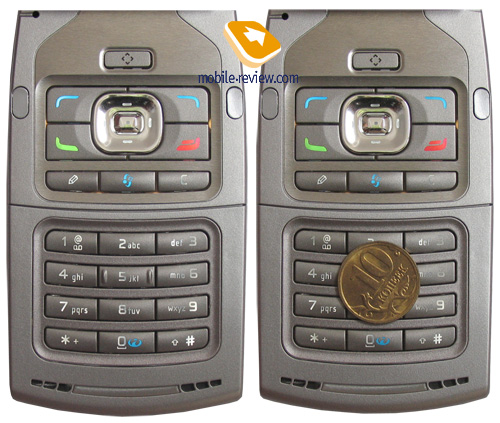
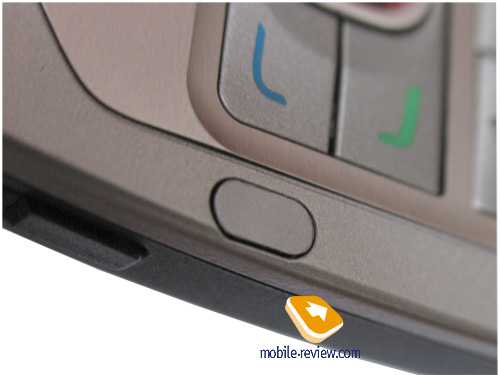
Pressing the button, you see a menu with 4 directions, and deviations of the navi button call a corresponding item. You can adjust the functions that are assigned to each direction.
No comments:
Post a Comment